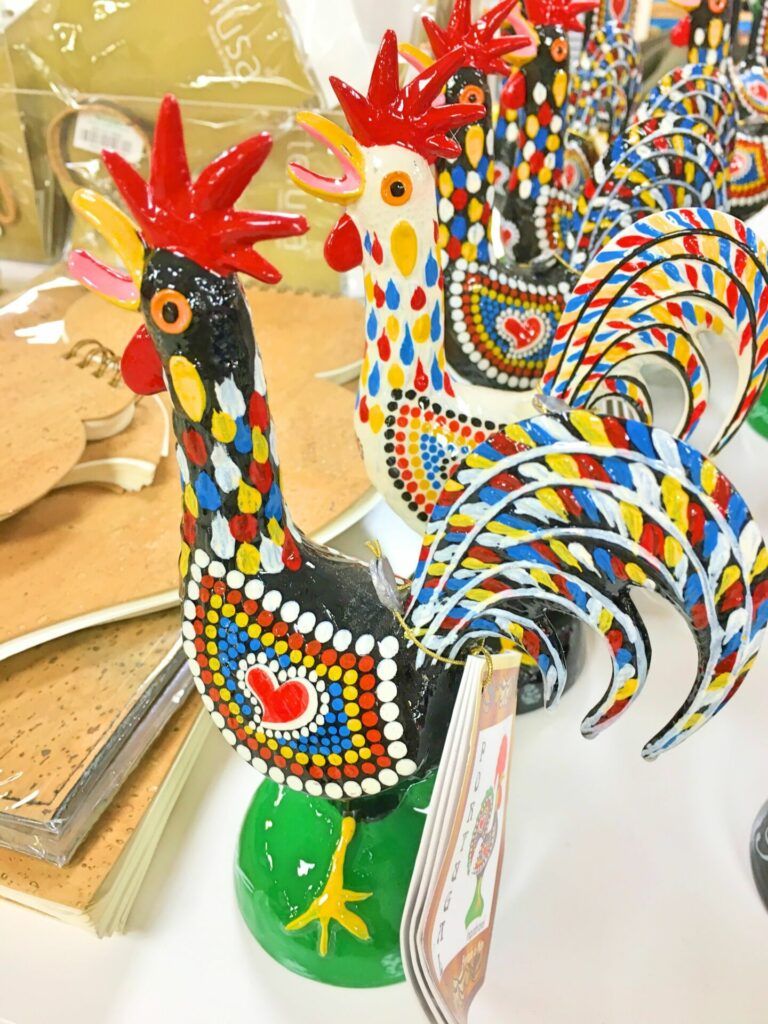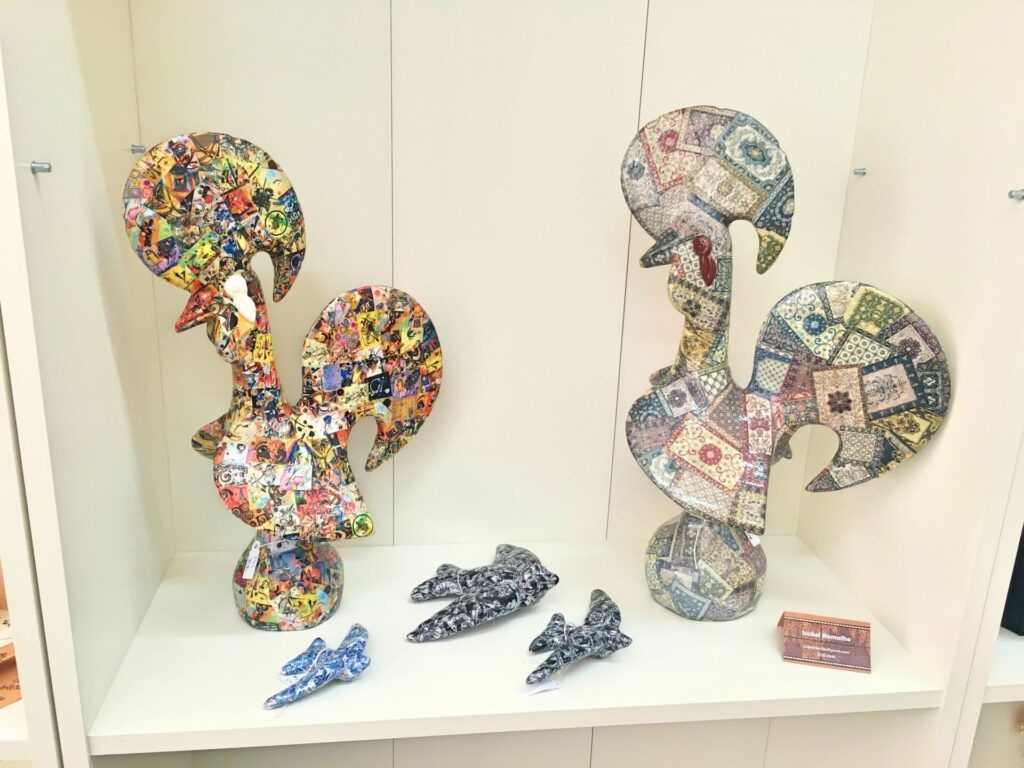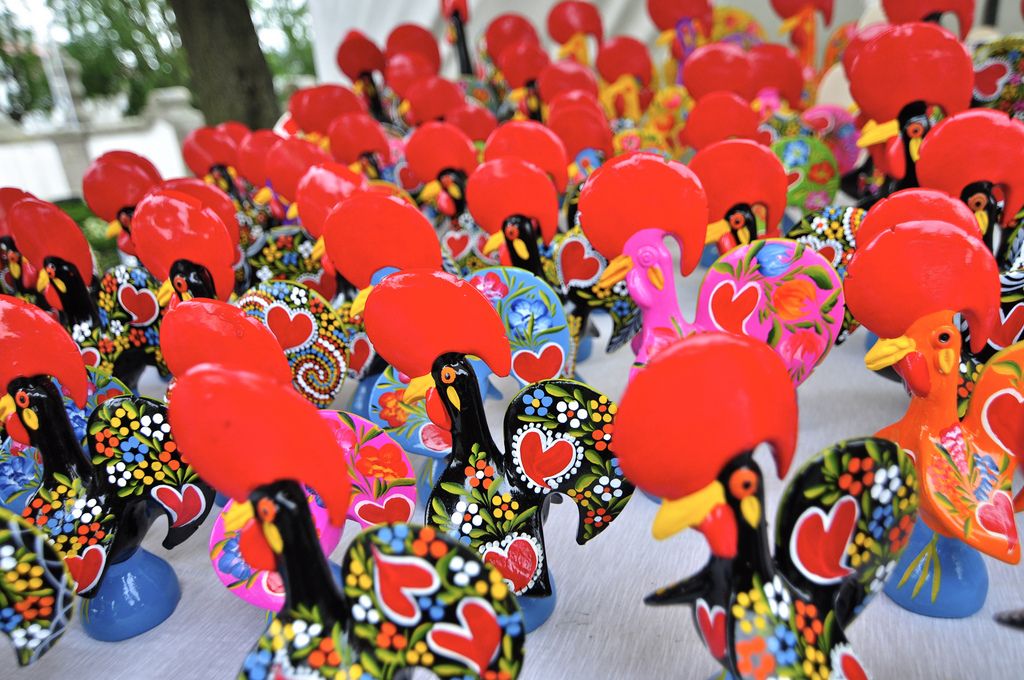If you’ve ever been to any souvenir shop in Portugal, you’ll see roosters everywhere. My British and South African readers will know what I’m talking about: it’s the Nando’s rooster. Tourists are so exposed to these colorful little birds that they end up buying one or two to take home as a reminder of their vacation… without really understanding why the galo de Barcelos, the Barcelos Rooster/Cock, is so famous.
The caveat to this post is that this story is a legend and therefore there are many different versions. In Portugal, we even have a saying “a cada conto se acrescenta um ponto”, meaning that with each telling of the tale, another detail is added. The way I heard the story is that in the 18th century, a Galician man on his way to Santiago stopped off in the town of Barcelos in Portugal to stay the night. He was accused of a crime (I can’t quite recall which one but some say he stole silver). He was found guilty but maintained his innocence. He asked to speak to the judge who sentenced him, a request which was granted. He was brought before the judge as he was dining on a roast rooster with his friends. The Galician man said “if I’m innocent, that rooster will get up and crow”. And before everyone’s eyes, the rooster stood up, flapped its wings and crowed. The man was set free and came back years later to erect a sculpture, the Monumento do Senhor do Galo, to honor the Virgin Mary and Santiago which can be found today at the Archaeology Museum of Barcelos.

Some versions state he was supposed to be hanged, but I’m pretty skeptical about that sort of punishment being handed out for theft… Nevertheless, the common theme in all of these is that a fully cooked main course got up and crowed and an innocent man was let go. The rooster became a symbol of Barcelos and, eventually, a sort of national symbol representing honesty.

The galo de Barcelos was traditionally made of clay, but you can also find versions in other mediums, such as wood or acrylic. Sometimes you’ll spot one on azulejo tiles or embroideries. Historically, the rooster has a big red comb on its head and hand-painted heart and flower motifs, reminiscent of some of the designs you find in Portuguese filigree jewelry. Nowadays, you can buy all the usual suspects when it comes to Barcelos rooster souvenirs: fridge magnets, bottle openers and corkscrews. Shops now stock bright, neon roosters (if you prefer your roosters to be a single color), or ones featuring funky patterns to match your decor.
Regardless of whether you take one of these little guys home or not, you now know the story of the Barcelos rooster, so you no longer have to wonder.


